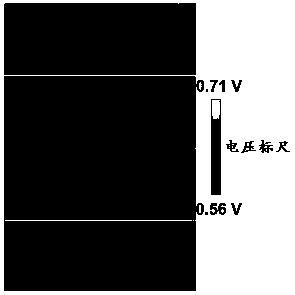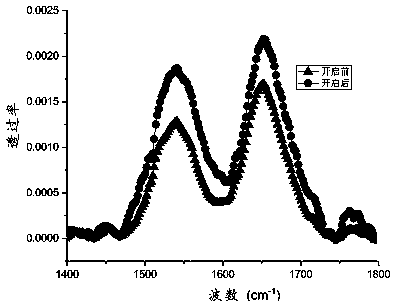Method for studying mechanism of resistive random access memory
A resistive memory, mechanism technology, applied in semiconductor/solid-state device testing/measurement, electrical components, circuits, etc., to achieve accurate and reliable test results
- Summary
- Abstract
- Description
- Claims
- Application Information
AI Technical Summary
Problems solved by technology
Method used
Image
Examples
Embodiment 1
[0042]The atomic force microscope is Fastscan atomic force microscope of Bruker Corporation. Bruker's SCM-PIT and conductive diamond atomic force probe were used respectively.
[0043] (1) Sample making
[0044] Silk protein is used as the active layer material. Dissolve the shredded silkworm cocoons with 0.02M sodium carbonate solution, boil them in boiling water for 60 minutes, and remove the sericin contained in the silkworm cocoons. The remaining fibers were rinsed with a large amount of deionized water, and dried overnight at room temperature to obtain a crude silk protein product. Then the crude silk protein product was completely dissolved with 9.3M lithium bromide solution, transferred to a dialysis bag (molecular weight cut-off 3000), and dialyzed with ultrapure water for 3 days (replace the ultrapure water every 12 hours). Finally, the dialysate was centrifuged (speed: 12000 rpm), and the supernatant was taken to obtain the silk protein solution. Using the obtain...
PUM
 Login to View More
Login to View More Abstract
Description
Claims
Application Information
 Login to View More
Login to View More - R&D
- Intellectual Property
- Life Sciences
- Materials
- Tech Scout
- Unparalleled Data Quality
- Higher Quality Content
- 60% Fewer Hallucinations
Browse by: Latest US Patents, China's latest patents, Technical Efficacy Thesaurus, Application Domain, Technology Topic, Popular Technical Reports.
© 2025 PatSnap. All rights reserved.Legal|Privacy policy|Modern Slavery Act Transparency Statement|Sitemap|About US| Contact US: help@patsnap.com



